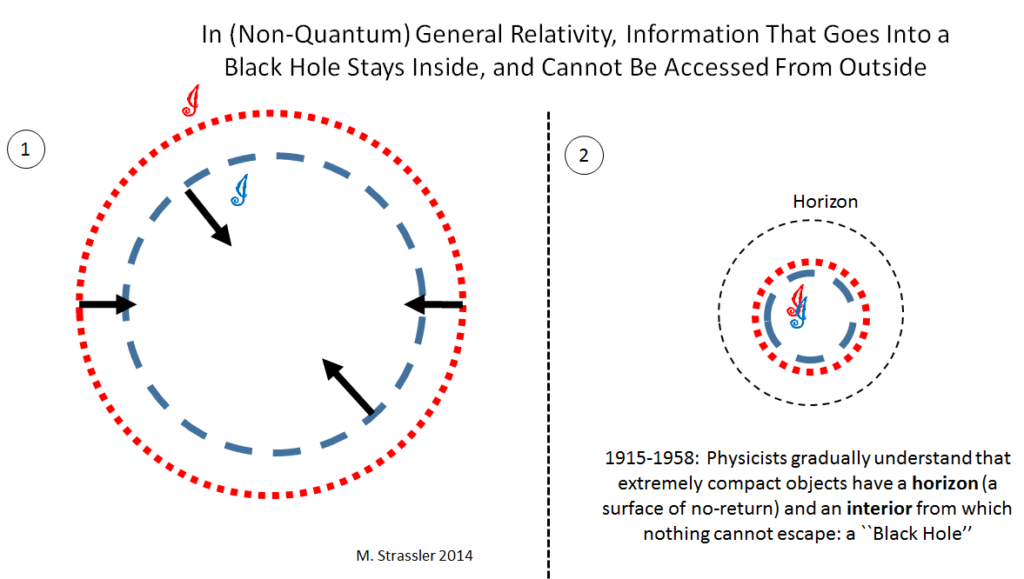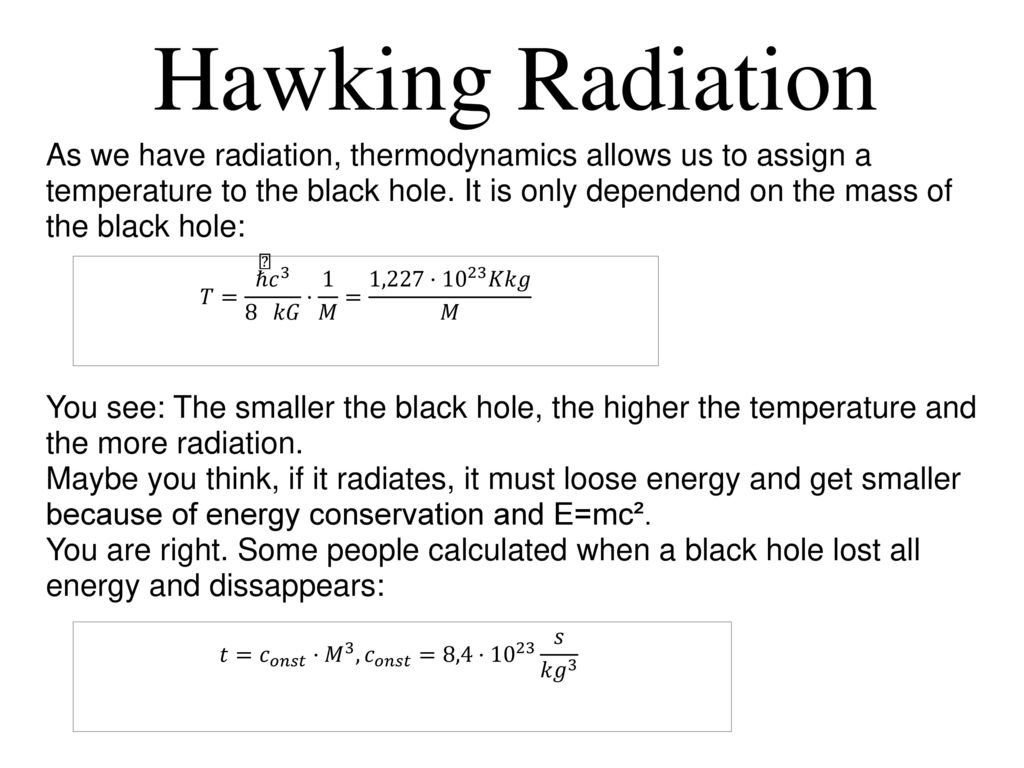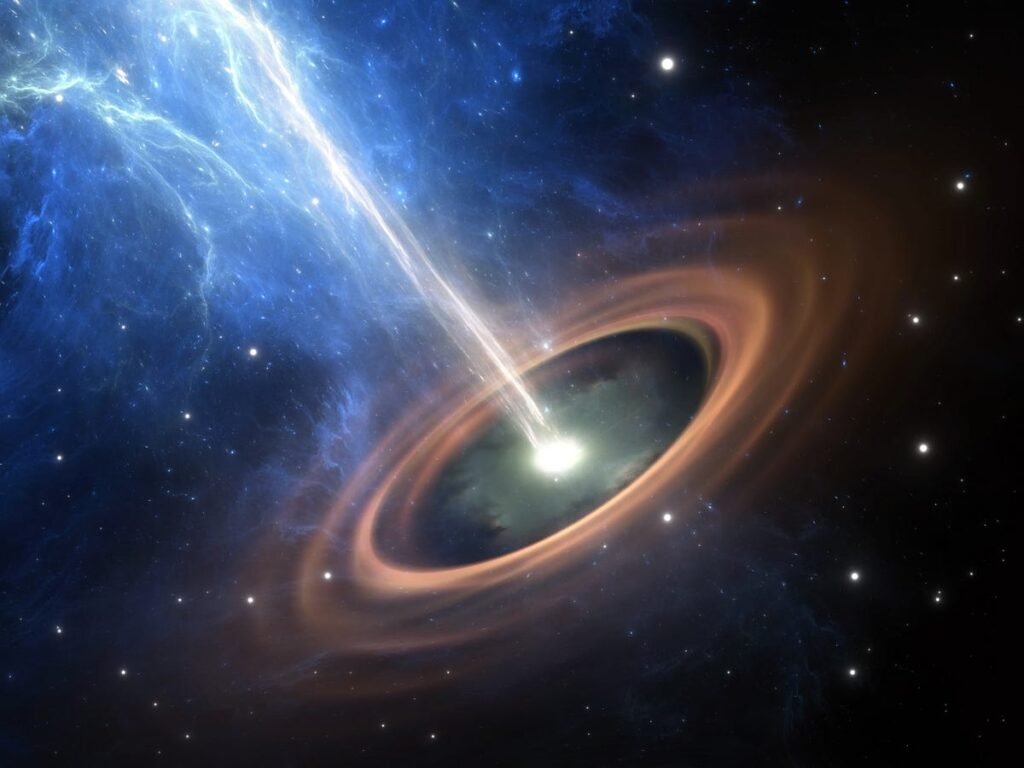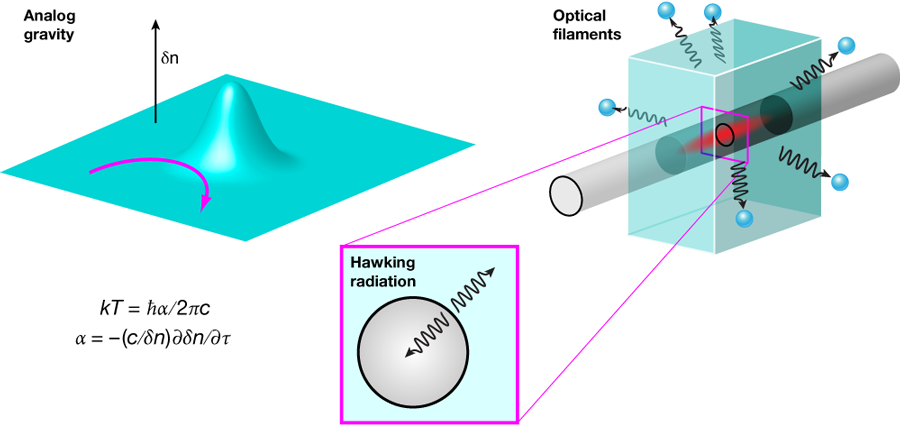Unveiling the Mystery: What is Hawking Radiation?
Hawking radiation formula: Hawking Radiation is a theoretical prediction about black holes that has intrigued physicists and astronomers alike. It was proposed by Stephen Hawking in 1974 and stands as a remarkable consequence of combining quantum mechanics with general relativity.
This radiation implies that black holes are not entirely black but emit particles and can potentially evaporate over time. The process is incredibly slow for large black holes, taking longer than the current age of the universe to have any noticeable effect.

Hawking Radiation also leads to intriguing implications about information loss in black holes. It suggests that information about matter that falls into a black hole could be preserved, in some form, in the radiation emitted, challenging the notion that information is lost forever once it crosses the event horizon.
The discovery of Hawking Radiation has not only deepened our understanding of black holes but also pushed the boundaries of modern physics, prompting new questions about the nature of space, time, and the ultimate fate of our universe.
While still a theoretical concept, efforts are underway to detect this faint radiation, which would be a monumental task given its weak nature compared to other cosmic sources. Nevertheless, proving its existence would be a pivotal moment in physics, confirming our theories about the quantum aspects of gravity and opening new avenues for exploring the cosmos.
How can we detect Hawking Radiation?
Detecting Hawking Radiation is a challenging task due to its weak nature. However, there are a few methods and instruments that scientists believe could be used to detect these elusive particles:
- Cerenkov Radiation Telescopes: There are four telescopes that can detect cascades of Cerenkov radiation, which may be related to Hawking Radiation. These include:
- The High Energy Stereoscopic System (HESS) in Namibia
- The Major Atmospheric Gamma Imaging Cherenkov Telescopes (MAGIC) on one of the Canary Islands
- The First G-APD Cherenkov Telescope (FACT) on La Palma Island in the Canary archipelago
- The Very Energetic Radiation Imaging Telescope Array System (VERITAS) in Arizona.
- Gravitational Waves: When massive black holes collide and merge, they emit gravitational waves. Detecting these waves could indirectly provide evidence for Hawking Radiation.
- Micro Black Holes: Observing micro black holes, which are theoretical and not yet created in labs, could be another way to detect Hawking Radiation if they exist and are old enough to emit observable radiation or be evaporating.
These methods represent the forefront of astrophysical research, and detecting Hawking Radiation would be a significant breakthrough in our understanding of black holes and quantum mechanics.
The Formula Unpacked: Hawking radiation formula
Hawking’s Equation is a formula that describes the thermal radiation predicted to be emitted by black holes, known as Hawking Radiation. This equation is a result of applying quantum field theory in curved spacetime to black holes and involves a blend of general relativity, quantum mechanics, and thermodynamics.

- Reduced Planck Constant (( \hbar )): This constant relates the energy carried by a photon to its frequency and is central to quantum mechanics.
- Speed of Light (( c )): A fundamental constant in physics, representing the speed at which light travels in a vacuum.
- Gravitational Constant (( G )): This constant appears in Newton’s law of universal gravitation and Einstein’s theory of general relativity, governing the strength of gravity.
- Mass of the Black Hole (( M )): The mass of a black hole determines its size and the strength of its gravitational pull.
- Boltzmann Constant (( k_B )): This constant relates the average kinetic energy of particles in a gas with the temperature of the gas and appears in the definition of entropy.

Hawking’s Equation suggests that black holes are not eternal; they emit radiation and lose mass over time, eventually evaporating completely. This process is more significant for smaller black holes because they emit radiation more rapidly due to their higher temperature.
The concept also introduces a paradox: if a black hole loses mass over time, what happens to the information about the matter that fell into it? This question leads to the information loss paradox, which challenges our understanding of quantum mechanics and general relativity.
Understanding Hawking’s Equation has profound implications for our grasp of fundamental physics. It suggests that black holes are simple thermal objects with temperature and entropy, providing a deep connection between gravity, thermodynamics, and quantum theory. The equation also opens up possibilities for new physics beyond what we currently understand, potentially leading to a unified theory that reconciles quantum mechanics with gravity.
This formula shows that the temperature of Hawking radiation is inversely proportional to the mass of the black hole. Smaller black holes emit radiation at a higher temperature, while larger black holes emit radiation at a lower temperature.
- Black Holes and Event Horizons:
- Black holes are incredibly dense regions in space where gravity is so strong that nothing, not even light, can escape from them.
- The boundary around a black hole beyond which escape becomes impossible is called the event horizon.
- The Paradox: Radiation from Black Holes:
- Ordinary electromagnetic radiation (like light) cannot escape from inside the event horizon.
- Yet, Hawking proposed that black holes emit thermal radiation – this is the Hawking radiation.
- Quantum Mechanics and Energy:
- Quantum mechanics tells us that energy is related to frequency: (E = hf), where (f) is the frequency.
- The energy of Hawking radiation is determined by the temperature of the black hole.
- Temperature and Radiation:
- The temperature of a black hole is inversely proportional to its mass.
- Smaller black holes emit more radiation and lose mass faster.
- Micro black holes (if they exist) would radiate intensely and eventually vanish.
- Detection Challenges:
- Hawking radiation is extremely faint and far below our current telescopes’ detection limits.
- We haven’t observed it directly yet.
Hawking Radiation: A Brief Overview
Hawking radiation is a fascinating theoretical concept related to black holes.
- What Is It?
- Hawking radiation refers to the thermal black-body radiation emitted outside a black hole’s event horizon.
- This is counterintuitive because once ordinary electromagnetic radiation crosses the event horizon, it cannot escape.
- Stephen Hawking’s Insight:
- In 1974, physicist Stephen Hawking proposed that black holes could create and emit subatomic particles.
- These particles arise naturally near the event horizon due to quantum effects.
- Temperature and Mass:
- The radiation temperature is inversely proportional to the black hole’s mass.
- Smaller black holes are hotter and should glow more intensely.
- Black Hole Evaporation:
- Hawking radiation reduces the mass and rotational energy of black holes.
- Black holes that don’t gain mass through other means are expected to slowly shrink and eventually vanish.
- Detection Challenges:
- Hawking radiation is extremely faint and beyond our current telescopes’ detection ability.
- So far, we haven’t directly observed it.
How does Hawking radiation affect the lifespan of black holes?
- Radiation Emission:
- Black holes emit Hawking radiation due to quantum effects near their event horizons.
- Virtual particle-antiparticle pairs spontaneously appear near the event horizon.
- Occasionally, one particle escapes while the other falls into the black hole, leading to a net loss of mass.
- Mass Loss and Evaporation:
- Hawking radiation causes black holes to lose mass over time.
- Smaller black holes radiate more intensely and evaporate faster.
- The more massive the black hole, the longer it survives.
- Endgame for Small Black Holes:
- Microscopic black holes (if they exist) could evaporate rapidly.
- Their lifespan might be on the order of seconds to minutes.
- Larger Black Holes:
- Stellar-mass black holes (formed from massive stars) have longer lifespans.
- They can persist for billions of years, gradually losing mass through radiation.
- Cosmic Recycling:
- When a black hole evaporates completely, it releases its remaining energy as radiation.
- This process contributes to the cosmic energy balance.
How do supermassive black holes behave differently from stellar-mass ones?
- Stellar-Mass Black Holes:
- Formation: Stellar-mass black holes form from the collapse of massive stars at the end of their lives.
- Mass Range: They typically have a mass a few times that of the Sun (ranging from about 3 to 50 solar masses).
- Distribution: Scattered throughout galaxies, similar to massive stars.
- Observable Signatures: Often found in binary systems with companion stars, emitting X-rays due to gas accretion.
- Radius: Their radius can be up to about 30 kilometers.
- Supermassive Black Holes:
- Location: Found at the centers of galaxies, including our Milky Way.
- Enormous Mass: They have millions to billions of times the mass of the Sun.
- Examples: The supermassive black hole at our galaxy’s center (Sagittarius A*) is 4 million solar masses, while some others hold tens of billions of solar masses.
- Cosmic Role: Influence galaxy evolution, star formation, and galactic dynamics.
Quantum Gravity and Hawking Radiation: Bridging the Gap
Quantum Gravity is the field of theoretical physics that seeks to describe gravity according to the principles of quantum mechanics, and it is one of the most significant unsolved problems in physics. Hawking Radiation is a phenomenon that could provide insights into this elusive theory.
Hawking Radiation arises from the effects of quantum mechanics, specifically quantum field theory, near the event horizon of a black hole. It suggests that black holes emit particles and radiation as if they were hot bodies, with a temperature inversely proportional to their mass. This discovery was groundbreaking because it was the first time that a prediction combined general relativity (which describes gravity) with quantum mechanics in a non-trivial way.

The existence of Hawking Radiation implies that black holes are not completely black but have properties similar to those of a black body, characterized by temperature and entropy. This challenges the classical view of black holes as simple gravitational sinks and introduces thermodynamic concepts into the realm of gravity.
The study of Hawking Radiation has led to significant insights into quantum gravity. It suggests that space-time may have a minimum length scale, below which the concept of space-time ceases to exist or becomes fundamentally different. This idea is supported by various approaches to quantum gravity, such as string theory and loop quantum gravity, which propose that space-time is quantized at the smallest scales.
Furthermore, Hawking Radiation has implications for the information paradox, which questions whether information about matter that falls into a black hole is lost forever or somehow preserved. This paradox highlights the conflict between general relativity and quantum mechanics, as general relativity predicts that information is lost in black holes, while quantum mechanics asserts that information cannot be destroyed.
Resolving this paradox is crucial for developing a consistent theory of quantum gravity. If Hawking Radiation can be observed and studied, it could provide empirical evidence for how information is treated in strong gravitational fields and how gravity behaves at quantum scales.
In conclusion, Hawking Radiation not only bridges the gap between quantum mechanics and general relativity but also pushes us closer to understanding the fundamental nature of reality. It holds the key to unlocking mysteries about the fabric of space-time, the behavior of singularities, and the ultimate fate of our universe.

